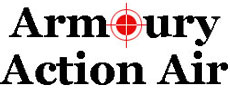Differences between Striker Fired and Hammer Fired Airsoft Weapons
Despite the fact that a Striker and a Hammer serve the same purpose, they are actually a little bit different.
So, when is a Striker fired weapon better than a Hammer fired weapon, or when would a Hammer offer a better option?
Here we will go over the differences between the two and a comparison about when each firing mechanism is better to have.
For starters, Striker fired, and Hammer fired refer to how the weapon actually fires a round.
What’s Hammer Fired Weapon?
A Hammer fired weapon, as the name may imply, has a Hammer.
A perfect example is a revolver, and any 1911 (Hi Capa) semi-automatic pistol. When you rack the slide of a Hammer fired weapon, it cocks the Hammer back. When you pull the trigger, the Hammer will fall, which strikes the firing pin – or the ‘knocker’ in an airsoft weapon. The knocker then springs forward and punches the gas release valve which then initiates the propellant that sends the round down range.
What about Striker Fired Weapon?
Striker fired weapons are fired by an internal Striker. Think about any Glock firearm. These all work with an internal Striker.
When you rack the slide of a Striker fired weapon, the internal Striker is cocked. When you pull the trigger, that internal Striker is what rides forward to punch the gas release valve. Most Striker fired weapons can only be de-cocked by pulling the trigger.
What’s the different between Striker Fired and Hammer Fired? Which is better?



Hammer Fired Hammer Fired Striker Fired
Hammer Forward Hammer Back No visible indication
(De-Cocked) (Cocked) (Cocked / Un-cocked?)
One common thing that you hear is that Hammer fired weapons are safer.
Hammer fired weapons will often have external safety catches – such as a Thumb Safety, that, in competition at least, have to be applied when the weapon is cocked. These will often only operate when the Hammer is in the cocked position.
People say that because of the fact that you are able to de-cock the Hammer, you are unlikely to accidentally discharge the weapon. Once you rack the slide and you are able to de-cock the Hammer, if you are not ready to shoot yet.
In a Striker fired weapon you are NOT able to de-cock Striker.
Usually, the only way to de-cock the Striker is to fire the weapon, although you can obviously remove the magazine which means that even if a round is chambered the gun will not fire.
ALL firearms are definitely safe in the right hands, but the external Hammer could be argued to add an additional degree of safety, especially for a novice or less experienced shooter.
Another reason that Hammer fired weapons with an external Hammer are slightly safer, is that you can actually see the position of the Hammer, so you will know exactly what position the firearm is in.
When to Use Each
Hammer fired weapons with an external Hammer are excellent for new shooters.
Being able to physically see the position of the Hammer, and what pulling the trigger does to the Hammer is a tremendous advantage to someone new to firearms. However, safe handling of any firearm will make it easy for a new shooter to learn and shoot. NO shooter should ever pull the trigger unless they fully intend to do so, so whether Hammer or internal Striker should make no difference.
Striker fired weapons are more commonly used as concealed carry weapons.
The reason for this is that the striker fired weapons don’t have a Hammer that can catch on the user’s holster or pocket. Since everything is internal, it makes for a sleeker weapon with no snags or catches.
The important thing is to ensure that you are using any weapon safely and are familiar with how it functions.
Conclusion
Overall, both Striker fired and Hammer fired weapons are excellent options.
The primary difference is how the firearms is actually fired. In a Striker fired weapon, an internal Striker is cocked back and fired when you pull the trigger. In a Hammer fired weapon, there is a physical Hammer that does the same.
While both weapons have their pros and cons, they are both excellent choices.
Striker fired weapons generally are better in defensive situations or where there is a risk of the Hammer being caught accidentally, such as in some IDPA scenarios, but Hammer fired weapons will also perform admirably.
New shooters may learn better from Hammer fired weapons, and some old school shooters will prefer Hammer fired weapons.
Also, some people find that having to physically operate an external safety on drawing the weapon is difficult, and for that reason prefer a Striker based weapon.
It comes down to personal preference, and whatever you can comfortably and safely use.
At AAA we have both types of gun available to try – why not give them both a go and see which you prefer?
